Python, a programming language known for its simplicity and versatility, has emerged as a powerhouse in the world of coding. Whether you’re a beginner or an experienced developer, Python offers a wide range of capabilities that can help you bring your ideas to life.
In this blog post, we’ll explore the incredible possibilities and real-world uses of Python. You’ll see why it’s become the top choice for developers in all sorts of fields.
Python in Web Development
Python has some amazing tools called Django and Flask that make it really easy to create awesome websites. These tools come with lots of pre-built features and components, so you don’t have to start from scratch.
With Python, you can make websites that look fantastic and can do all sorts of cool things. You can add buttons and forms that users can interact with. When they click on buttons or fill out forms, they can see results right away.
Python also allows you to create web APIs. These are like secret passages that connect your website to other websites and systems. It means your website can talk to other websites and share information. It’s like having your website join a cool club!
No matter if you want to build a personal blog, an online store, or even a fancy social networking site, Python gives you the power to create impressive web applications. These applications can handle lots of users and provide an amazing experience.
Data Analysis and Visualization
Python is an excellent choice for data analysis and visualization tasks. It offers powerful libraries like NumPy, Pandas, and Matplotlib that are widely used in this domain.
With Python’s data analysis libraries, you can work with data in all sorts of ways. You can perform complex operations on data, manipulate it to extract valuable insights and analyze trends and patterns.
For example, Matplotlib: lets you create all sorts of charts and graphs to represent your data visually. You can make line charts, bar graphs, scatter plots, and many more.
Python’s data analysis and visualization libraries make it easier to understand and present data in a meaningful way. Therefore, Python is a great choice for exploring a large dataset, looking for trends in sales figures, or trying to communicate your findings effectively. Python provides the tools you need to perform data analysis and create compelling visualizations.
Machine Learning and Artificial Intelligence
Python is a really popular language for machine learning and artificial intelligence (AI) projects. It has special tools and libraries that make it easier to build smart systems and teach computers to do cool things.
With Python, you can dive into the world of machine learning. You can use tools like TensorFlow, Keras, and scikit-learn to create models that can make predictions, recognize patterns, and understand complex data.
Imagine being able to build systems that understand human language. Python has tools for that too! With natural language processing (NLP) libraries, you can analyze and work with text. You can build language translation systems, figure out if people’s words are positive or negative, or even make chatbots that can have conversations with people.
Python also helps with image recognition. You can use libraries like OpenCV and scikit-image to work with images and create applications that can detect objects or analyze pictures.
Scripting and Automation
Python is fantastic for scripting and automating tasks. It allows you to write code that can perform repetitive actions and make your life easier.
With Python, you can automate all sorts of tasks that you would normally have to do manually. For example, you can write a script to automatically rename a bunch of files or sort them into different folders based on certain criteria. You can also use Python to interact with other software applications and make them work together seamlessly.
Python’s simplicity and readability make it a great choice for scripting. You can write code that is easy to understand and maintain. Plus, Python has a large community of developers who share their scripts and provide support, so you can find help and resources whenever you need them.
Scientific Computing
Python is useful for doing scientific calculations and analyzing data in fields like physics, biology, and more. It has special tools and libraries that make these tasks easier.
One important library for scientific computing in Python is called NumPy. It helps you work with numbers and arrays efficiently. You can do things like adding, subtracting, multiplying, and dividing numbers, as well as perform more advanced operations like solving equations and finding patterns in data.
Another library called SciPy builds on top of NumPy and provides even more powerful functions for scientific tasks. It has tools for optimization (finding the best solution), interpolation (making educated guesses between data points), and signal processing (analyzing patterns in signals, like sound waves).
After calculation, you can use a visualization library like Matplotlib to create beautiful visualizations of your data. You can create line graphs, bar charts, scatter plots, and more. It’s like drawing pictures to show what your data means.
Python’s simplicity makes it great for scientific computing. The code is easy to read and write, so you can focus on the science instead of getting tangled up in complicated programming.
Game Development in Python
You can develop a Game using Python. Python has special tools and libraries, like Pygame, that make it easier to create games.
With Python, you can build all kinds of games, from simple ones to more complex ones. You can create 2D games with characters that move around, jump, and collect items. You can also make games where you solve puzzles or explore virtual worlds.
Python provides features that help you handle graphics, sound, and user input in your games. You can draw colorful graphics, play music and sound effects, and let players use keyboards or game controllers to control the characters.
So, if you have a creative idea for a game and want to bring it to life, Python is a great tool to use. You can let your imagination run wild and create exciting games that people can enjoy playing.
Internet of Things (IoT)
You can integrate Python with the Internet of Things (IoT). It helps you connect and control devices, so they can talk to each other.
With Python, you can create projects that involve IoT devices like sensors and small computers. You can collect data from these devices and make them do things based on that data.
Python offers various libraries for IoT projects:
- Adafruit CircuitPython: Simplifies working with IoT devices and sensors.
- MQTT: Provides a lightweight messaging protocol for device-to-server communication.
- AWS IoT SDK for Python: Enables connectivity and interaction with AWS IoT services.
- PySerial: Facilitates communication via serial ports.
- Requests: Simplifies HTTP requests for web-based API interactions.
- Twisted: A versatile framework for complex network interactions in IoT applications.
Whether you want to make your home smarter, monitor the temperature, or build something cool, Python can help you. It gives you the power to connect and control devices, gather data, and create useful IoT projects.
Desktop GUI Applications
Python offers some great tools for creating desktop GUI (Graphical User Interface) applications. These tools make it easy to build programs with buttons, windows, and other elements that users can interact with.
One such tool is Tkinter, which is built into Python. It lets you design simple and user-friendly interfaces with buttons, text boxes, and more. Tkinter is great for beginners because it’s easy to understand and use.
Another option is PyQt, which works with the Qt framework. PyQt helps you create professional-looking applications with advanced features. It has lots of pre-built components that make it easier to design complex interfaces.
If you want a library that looks and feels like the operating system you’re using, wxPython is a good choice. It works well on different systems and has many customizable widgets to choose from.
Kivy is an interesting option if you’re building touch-based applications. It works on multiple platforms and allows you to create visually appealing interfaces that respond to touch gestures.
For small and simple applications, PyGUI is a lightweight library that gets the job done without overwhelming you with too many features.
Web Scraping
Web scraping is a technique that allows you to extract information from websites. It’s like using a virtual robot to collect data for you.
With Python, you can write code to automate the process of web scraping. You can instruct Python to visit web pages, search for specific information, and extract the data you need.
To make web scraping easier, Python has libraries like Beautiful Soup and Scrapy. These libraries provide tools and functions that help you navigate and extract data from web pages.
When you run your Python code, it goes through the web pages, finds the relevant data, and saves it for you to use. You can gather information like prices, product details, news articles, or any other data available on websites.
Web scraping can be handy for various purposes. You might use it to gather data for research, monitor prices for online shopping, or analyze customer reviews. The possibilities are endless!
However, it’s important to be respectful when scraping websites. Make sure to follow the website’s terms of service and be considerate of their resources. Also, be aware that some websites might have restrictions or anti-scraping measures in place.
And Much More
Whatever you can imagine in the world of programming, Python can likely help you achieve it. It has a vast ecosystem of libraries and frameworks that cater to various domains and tasks.
For example, if you want to build chatbots or conversational agents, Python offers libraries like NLTK (Natural Language Toolkit) and spaCy for natural language processing and text analysis.
If you’re working with databases, Python has libraries like SQLAlchemy and Django ORM that simplify database interactions and management.
When it comes to creating APIs (Application Programming Interfaces), Python provides frameworks like Django and Flask, which make it easier to develop robust and scalable APIs for web and mobile applications.
Speaking of mobile apps, Python offers frameworks such as Kivy and BeeWare that enable cross-platform app development, allowing you to build mobile apps that work on multiple operating systems using Python.
Conclusion
Python is an amazing programming language that can do so many things. You can use it to build websites, analyze data, create smart systems, make games, and even connect devices together. It’s popular because it’s easy to understand and has lots of tools that make coding easier.
No matter if you’re just starting out or have been coding for a while, Python has something for everyone. You can build all kinds of projects and bring your ideas to life. With Python, the possibilities are endless, and you can achieve great things.
Image credit: Image by Geribody


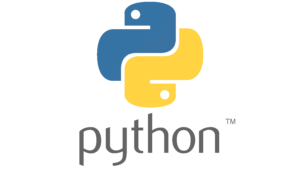
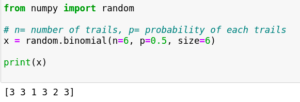
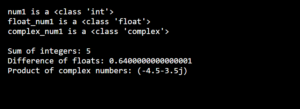
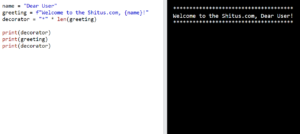
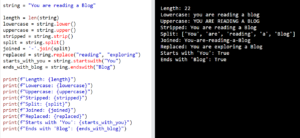
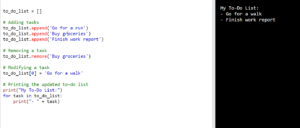
1 thought on “Python: The Language That Can Do It All”